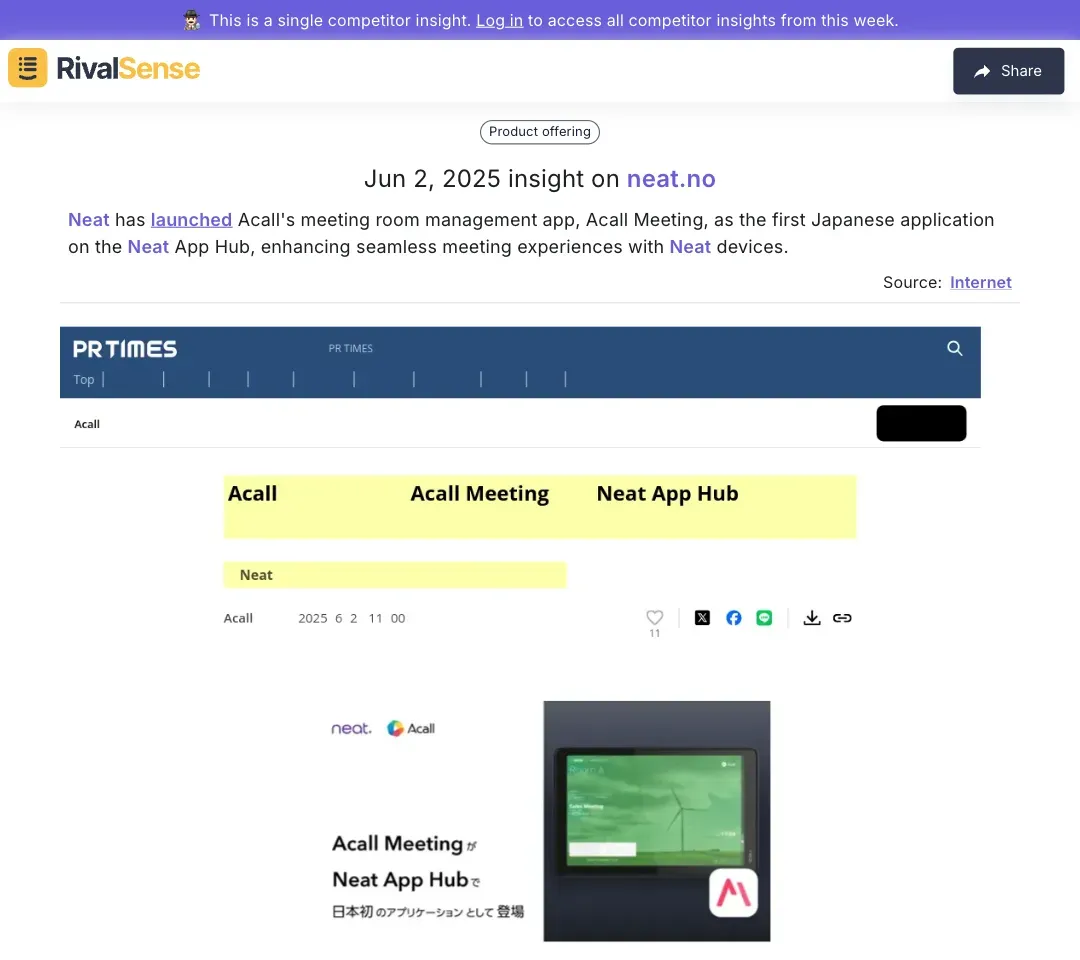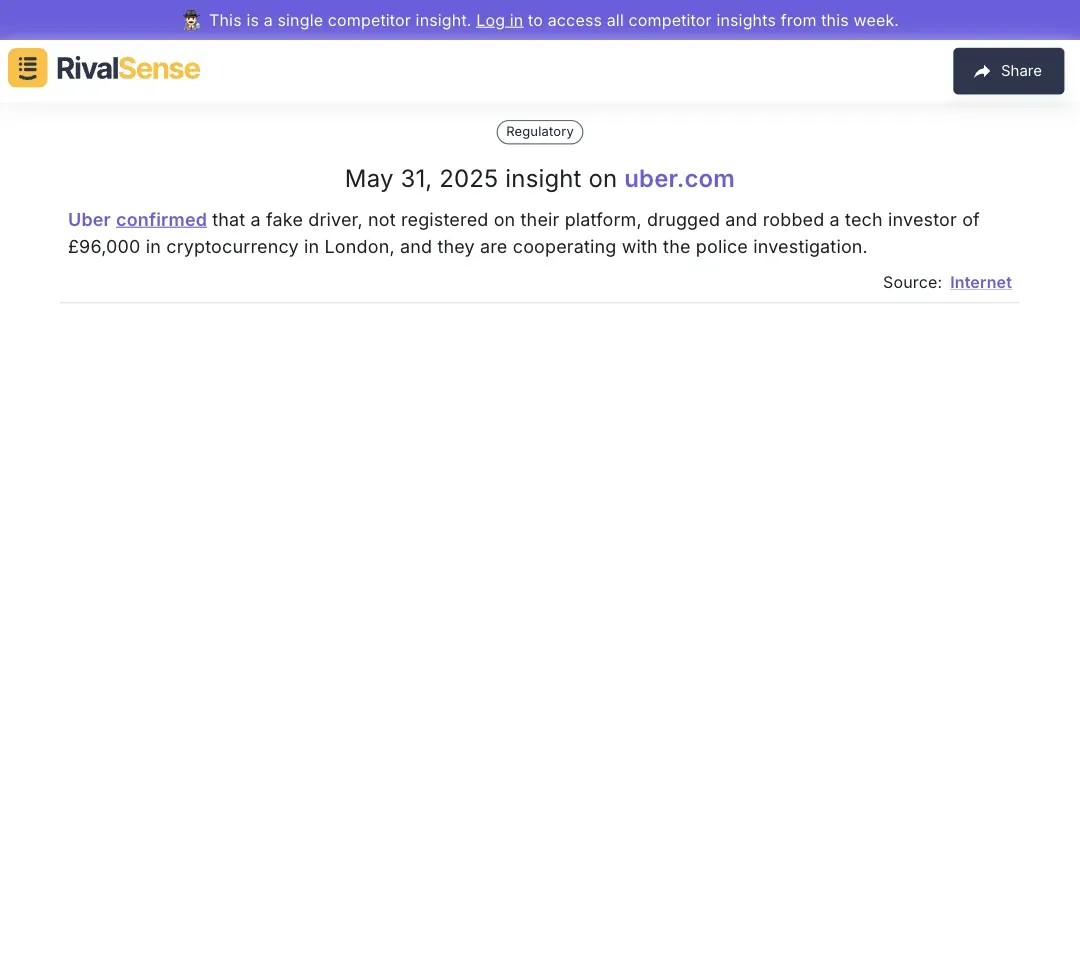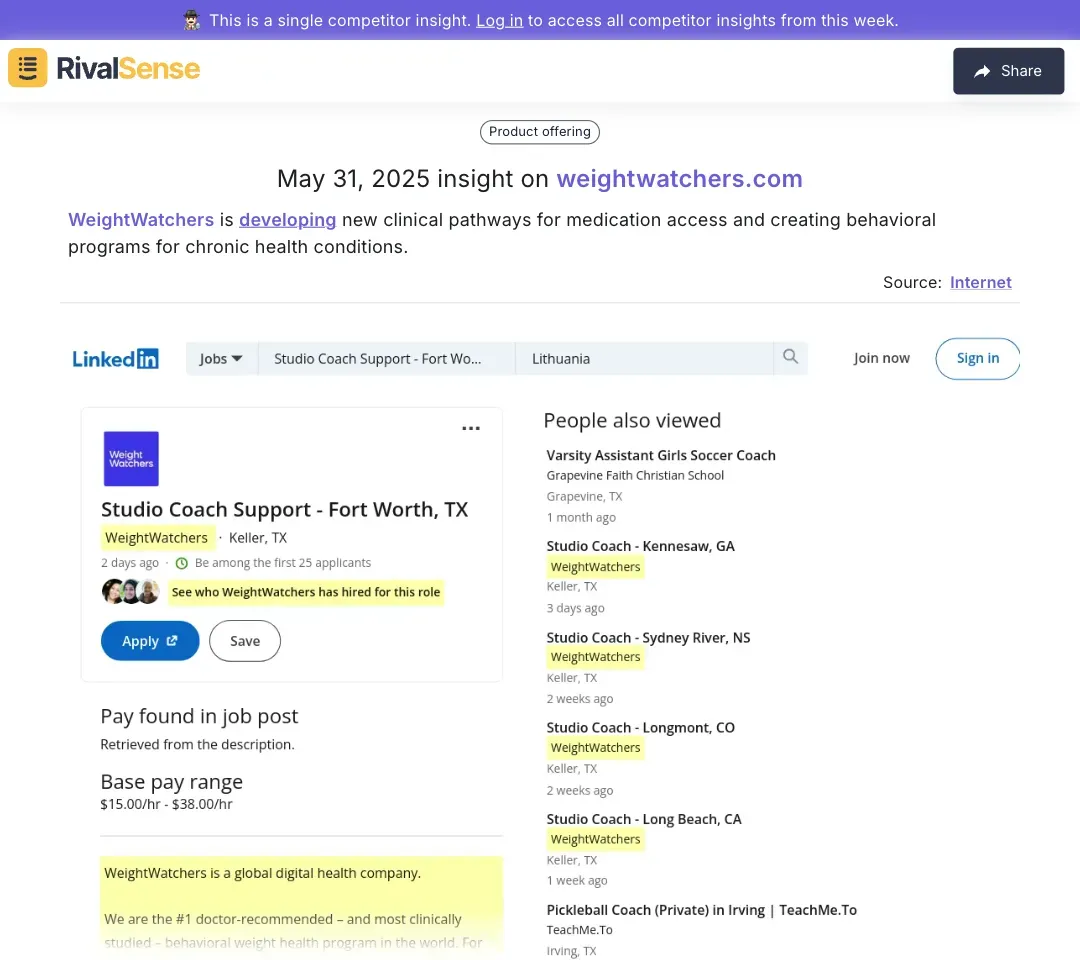Competitor Insight Templates: Strategic Response Frameworks
In today's rapidly evolving business landscape, understanding competitors isn't optional—it's essential for survival and growth. Competitor insights form the backbone of strategic planning, enabling businesses to anticipate market shifts, identify opportunities, and neutralize threats before they impact your bottom line. By systematically analyzing competitor data, companies can craft strategies that respond to current conditions while positioning for future success. However, gathering and synthesizing this information can be overwhelming without proper structure. This is where competitor insight templates become invaluable—they provide a consistent framework to organize data, spot patterns, and extract actionable intelligence. Whether tracking pricing changes, marketing campaigns, or product innovations, templates bring efficiency to your analysis process. Here's how to get started:
- Identify key competitors directly competing for your market share
- Select critical metrics aligned with your business objectives
- Implement templates to categorize and compare intelligence
- Establish regular review cycles to maintain relevance
Leveraging Product Launches for Strategic Advantage
Monitoring competitor product releases offers invaluable intelligence about market direction and customer expectations. When competitors introduce new features or partnerships, it signals emerging trends you can capitalize on. For example, if multiple players launch AI integrations, it indicates industry-wide automation adoption. Use these signals to refine your roadmap and innovation priorities.
Consider how partnerships amplify market impact. Neat recently launched Acall's meeting room management app as the first Japanese application on their App Hub, enhancing meeting experiences through seamless device integration:

Tracking such product launches reveals how competitors expand their ecosystems—intelligence that helps identify partnership opportunities and feature gaps in your own offerings. When competitors innovate, respond strategically:
✅ Strategic Response Checklist
- Monitor announcements and customer reactions
- Identify trends and underserved needs
- Evaluate partnership opportunities
- Prioritize quick-win adaptations
- Communicate updates transparently
- Assess impact: Determine if the innovation threatens your position
- Adapt quickly: Use agile development to incorporate improvements
- Differentiate: Highlight unique value competitors can't replicate
- Engage customers: Gather feedback to refine your response
Navigating Crisis and Reputation Management
Reputational crises can erupt unexpectedly, making competitor analysis crucial for preparedness. Observing how others handle scandals provides actionable lessons for your crisis playbook. Timely transparency and regulatory cooperation often determine brand recovery success versus prolonged backlash.
Uber's recent crisis exemplifies this. When a fake driver (unregistered on their platform) drugged and robbed a tech investor of £96,000 in cryptocurrency, Uber's cooperation with police became critical to damage control:

Monitoring such incidents provides real-world lessons in effective crisis response. For your business, this intelligence helps build robust protocols and avoid similar missteps. Proactively implement these measures:
- Pre-establish crisis teams with clear roles
- Develop communication checklists for rapid response
- Create transparency protocols for stakeholder updates
- Build regulatory relationships before crises occur
Expanding Market Reach Through Strategic Innovation
Competitors' expansion into new sectors often reveals untapped opportunities. Analyzing their strategic pivots helps identify emerging customer needs and potential partnership avenues before markets saturate. Health and wellness companies particularly demonstrate how innovation drives growth.
WeightWatchers exemplifies this through their development of clinical pathways for medication access and behavioral programs for chronic conditions:

Tracking such expansions provides insights into how competitors diversify offerings and enter adjacent markets. For your strategy, this highlights opportunities to address unmet needs through innovation or partnerships. Capitalize on these insights with these steps:
- Conduct SWOT analysis to identify competitor gaps
- Explore partnerships with complementary service providers
- Pilot test innovations with user segments
- Monitor regulatory changes affecting new markets
Building a Strategic Response Framework
Transforming competitor insights into action requires a structured approach. A dynamic framework ensures intelligence directly informs decision-making across departments. The most effective systems balance proactive monitoring with agile response mechanisms.
Follow this five-step process:
- Identify key competitors: Focus on those threatening your market position
- Gather intelligence: Track product updates, pricing changes, and marketing moves
- Analyze patterns: Detect trends to predict future competitor actions
- Develop responses: Create tailored counter-strategies (e.g., feature enhancements)
- Implement & refine: Execute while continuously monitoring outcomes
🔁 Continuous monitoring is non-negotiable. Implement automated alerts for competitor activities to maintain proactive positioning. Quarterly framework reviews ensure alignment with market evolution.
Framework Optimization Tips
- Use cross-functional teams to diversify perspectives
- Maintain response checklists for consistency
- Schedule monthly competitive intelligence audits
Conclusion and Next Steps
Competitor insight templates transform raw data into strategic advantage by providing structure to your analysis. Consistent application helps anticipate market shifts, uncover opportunities, and develop informed counter-strategies. Remember these key takeaways:
- Regular monitoring beats reactive firefighting
- Structured templates enable actionable intelligence
- Cross-functional integration ensures company-wide alignment
For immediate implementation:
- Identify your top 3 competitors
- Select 2 templates (e.g., feature comparison, SWOT)
- Schedule weekly 30-minute review sessions
- Assign ownership for intelligence categories
Accelerate your competitive strategy with RivalSense—our platform tracks competitor product launches, pricing changes, partnerships, crises, and expansion moves across websites, registries, and media. Get automated weekly reports with actionable intelligence tailored to your market.
👉 Try RivalSense free today and receive your first competitor report immediately: Get Started Now
📚 Read more
👉 5 Common Roofing Software Mistakes to Avoid for Better Customer Segmentation
👉 Data-Driven Insights on Competitor Partnerships & Client Strategies
👉 How Linear's AI Scheduling Spurred Competitor Innovation
👉 Unlock Competitor Secrets: A Founder's Guide to LinkedIn Benchmarking
👉 Unlocking Competitive Edge: Analyzing Competitor Partnerships & Client Wins
